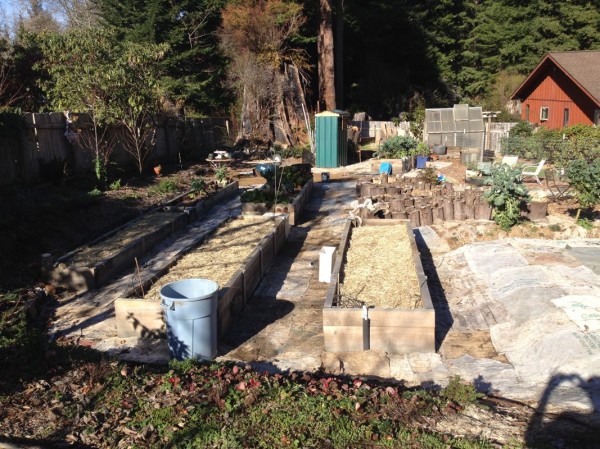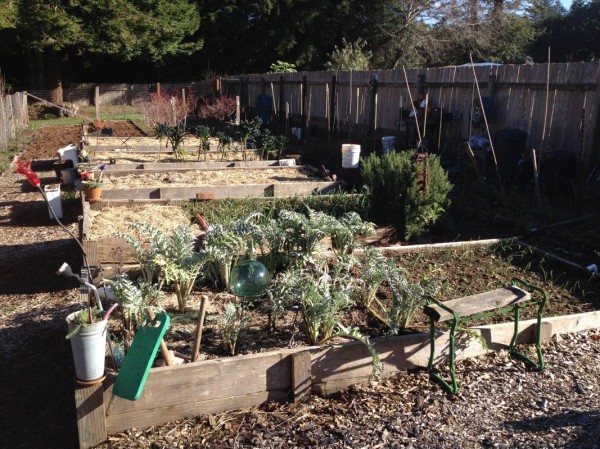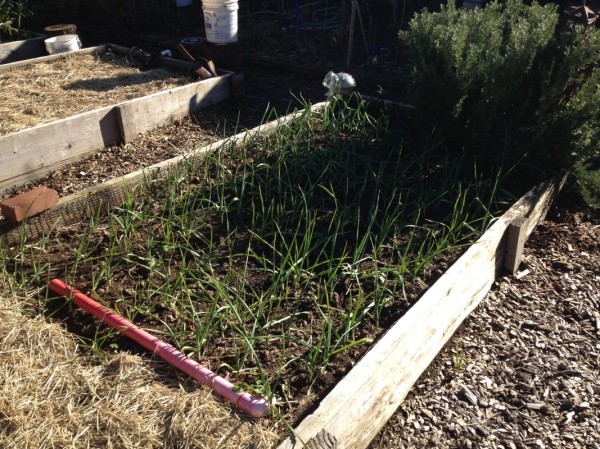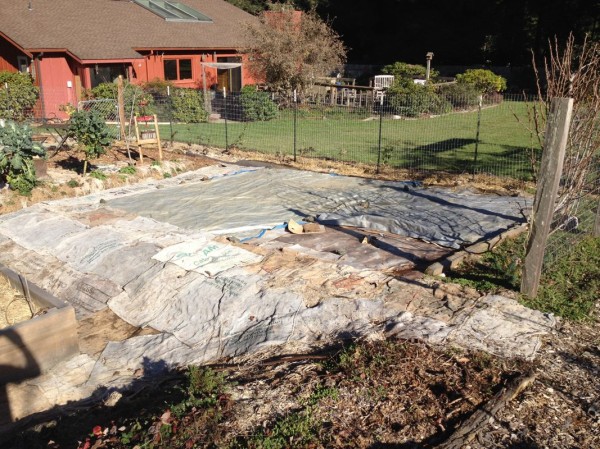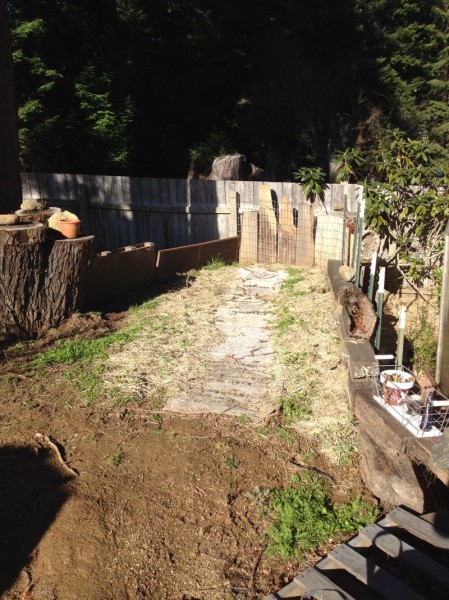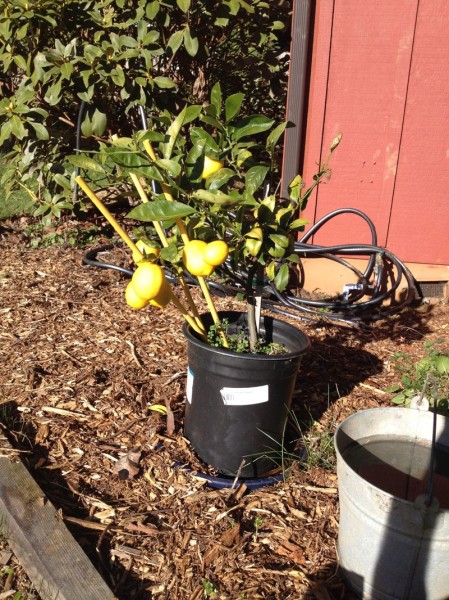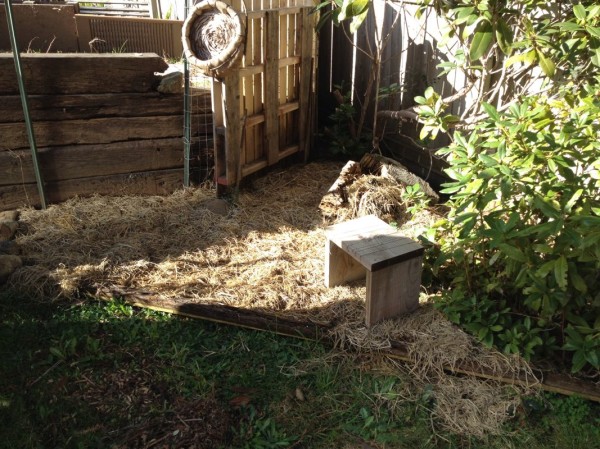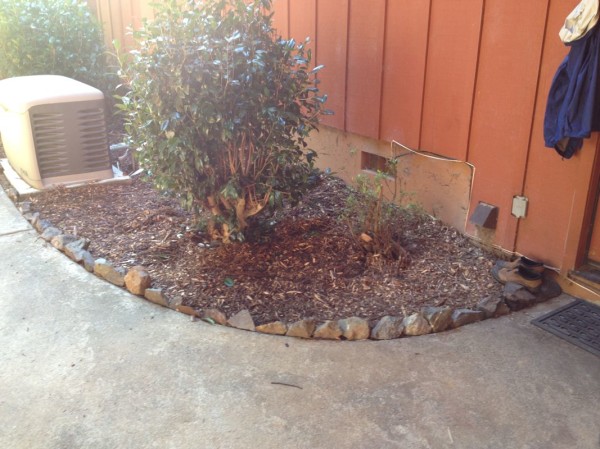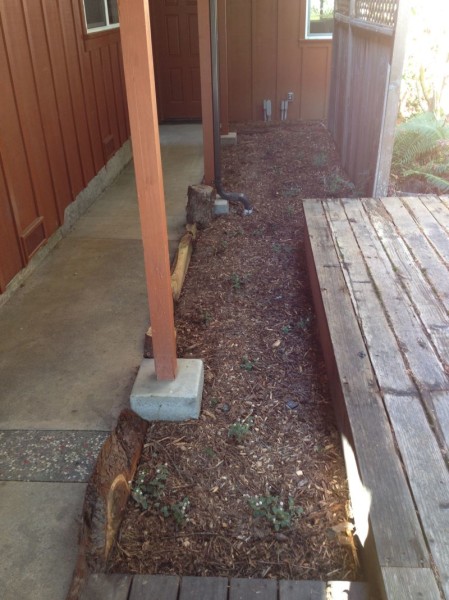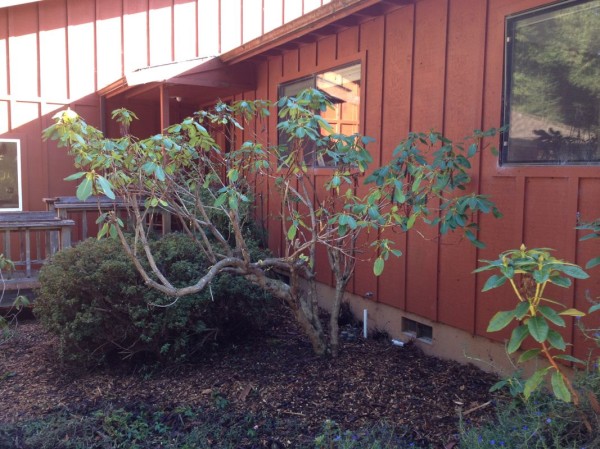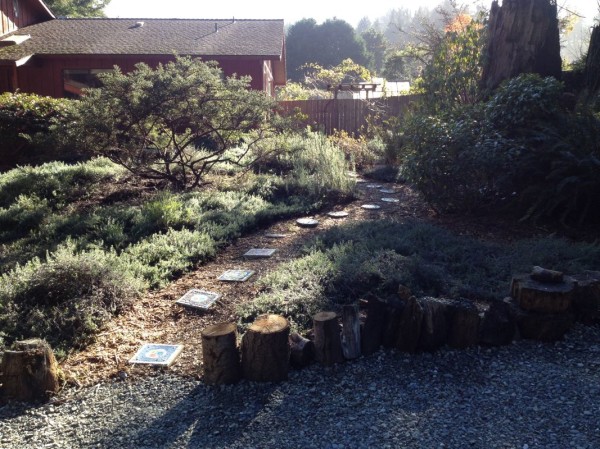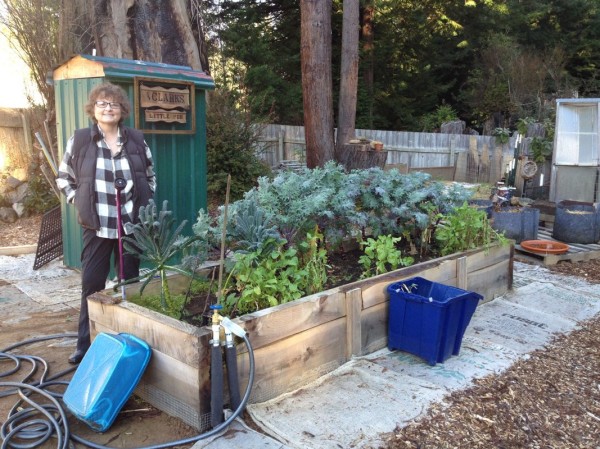Journal #40: Meanwhile, in the Garden…
by Miles Raymer
During the last six months, my labor has been a scarce commodity in our vegetable garden. I’ve been working on the house full time, volunteering weekly at Tule Fog Farm, and using my weekends to read, write and rest my body. All this left little time for maintaining our recently expanded garden. Ma assumed the lion’s share of the work, occasionally hiring a former student named Ted to help her with some of the heavy lifting. We’d never have made it through the summer and fall without Ma’s diligence and expertise.
My goal for this first journal of 2015 is twofold: first, I’d like to reflect on the building process, specifically how it contrasts with gardening. Second, I want to document the great work Ma has been doing while I’m knee deep in nails, caulking, and 2x4s.
Participating in the construction of my own home was one of the most meaningful projects I’ve ever undertaken. I don’t think many people nowadays get the chance to learn an entirely new skill and make such a personalized contribution to their future at the same time. Building is a fascinating and fun activity, so I was thrilled when Sean asked me if I wanted to work with him on some other projects. We are now working on an addition in Eureka, which means I still don’t have much time for gardening. My plan is to work full time until the end of March, at which point I will reduce my work days so I can have more time to help Ma get the garden ready for summer.
As much as I enjoy building, it does have some significant drawbacks when compared to gardening. The one that bothers me the most is the wasteful nature of traditional construction techniques. Although we do our best to use wood, nails, and other materials efficiently and to reuse things whenever possible, we inevitably end up with a huge pile of debris, much of which cannot be reused or recycled. I’m not sure how this compares to the experience of builders who use more “natural building” methods, some of which I was exposed to during my Permaculture Design Course at the Occidental Arts and Ecology Center.
My knowledge of building codes and costs is still very rudimentary, but my initial impression is that many green materials are still far too expensive for typical clients who can’t afford to go the extra mile. County and state codes appear to be a major contributor to “overbuilding”––mandated reinforcements and alterations that perhaps aren’t necessary for structural integrity. Some codes also limit the ability of builders to try things that might be less wasteful. While I certainly think we need a robust set of building codes, the existing ones seem similar to US Tax Code––protean, byzantine, opaque.
I should add an important addendum, which is that my impressions are informed entirely by people on the building side of the process, rather than officials who write regulations or engineers who seek to justify them. I don’t think I have anything close to the full story; my main goal here is to record my personal experience with building thus far, not to pen some anti-regulatory manifesto. Until I am better informed, it’s enough to say that the world of building, like every other part of our democracy, is a bit of a mess. Whether or not environmental issues are a major priority seems unclear to me, although I believe California has one of the more environmentally friendly building codes (this has also been a contributor to the trade-off of higher building costs). I’m happy to keep learning about the existing system for now, but there is certainly a side of me that longs for further exposure to building methods that aren’t quite so “by the book.”
The other aspect of building that heavily contrasts with gardening is the way in which I relate to the materials I work with. Both activities require physical labor, attention to detail, and a wide knowledge of how systems and structures interact with one another. But unlike gardening, building demands a level of precision that is both enticing and confining. “Getting it right” can literally mean the difference between passing a county inspection and having to spend hours or days on fixes. There is also the critical fact that you are working on someone’s living space, so their safety and comfort are absolutely paramount. Meeting all these demands requires a builder to take an extremely authoritative attitude toward his tools and materials. The builder is a crafty, cranky deity amidst processed plant corpses and synthetic products of industrialism––ebullient when the numbers add up, vengeful and distraught when they don’t. This relationship breeds an impressive level of resourcefulness and determination, but also the specious impression that nature can (and should) be fully subdued to serve human purposes. It’s a queer disposition about which my ambivalence regularly gives me pause.
Gardening, at least for an amateur like me, is like trying to conduct a symphony of professional musicians who are in various stages of physical and emotional turmoil but are reticent to share such information. Plants have a life of their own, with particular ends, needs, and finicky preferences. Some grow well together, while others compete for the same nutrients. Learning how to manage an organic garden, especially the soil, is a lifelong process that defies mechanization and standardization. The grand payoff, however, is that of the successful conductor who coaxes the errant musicians into producing the transcendent sound that can only come from pulsing, living beings. And yeah, also that whole bit about producing your own food.
The bottom line for me right now is that while I’m grateful for my exposure to building and genuinely look forward to learning lots more about it, I’m hankering to get back to my garden. As that’s not likely to happen in any serious way until April, I’ll assuage my longings with a celebration of Ma’s terrific progress over the last few months. Behold!
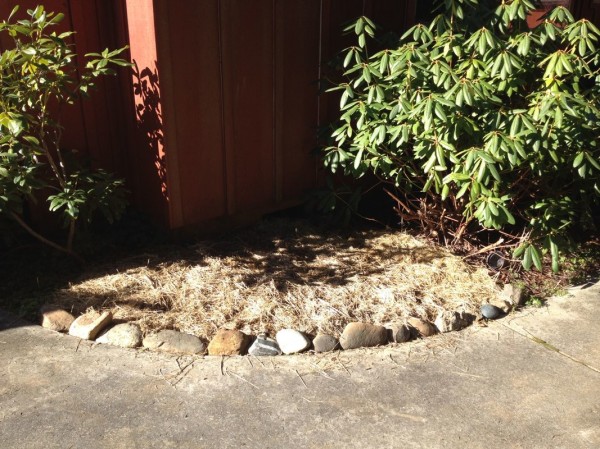
Rock border and rice straw over mushroom spores purchased from a local farmer (fingers crossed that we get a harvest)
The garden is still producing in a few beds, but we also decided to buy a share of Eddie Tanner’s winter CSA again this year. It’s a bargain and the produce from DeepSeeded Farm is top-notch. Having that CSA has allowed us to reduce production here and give most of our beds a rest.
When I finally get back to the garden in April, it will be in great shape thanks to Ma and Ted. I can’t wait to get started on some projects that I’ve been putting off for too long now. Ma is now officially retired and making the most of her extra free time. I couldn’t be happier for her, or more grateful for her dedication to our home food production.
